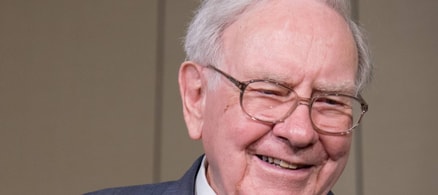5 rules to live by if you want to invest like a pro
Rule #1: Diversify
It might seem like pure common sense to invest in companies that have thrived during These Times while avoiding the businesses and sectors that have been hurt by our new normal.
But anyone who said they could have predicted the rise of individual stocks like Zoom, Slack, Peloton, Clorox, and Loblaw, while at the same time predicting the fall of Boeing, Disney, and Halliburton this year is suffering from serious hindsight bias.
Similarly, critics of passive investing (with index funds and ETFs) say it’s not wise to hold every single stock in the market, which right now include big losers like airlines, hotels, and cruise lines.
But these critics ignore the fact that no one can predict with any degree of certainty which stocks will outperform in the future. Today’s darling can quickly become tomorrow’s dog. History is filled with examples, from Eastman Kodak to General Electric.
There’s a reason why Nobel Prize winner Harry Markowitz said that, “diversification is the only free lunch in investing.” Want proof? Check out the “periodic table” of investment returns.
This year’s best performer might be the next year’s worst. A diversified portfolio ensures you capture the best performing asset classes every year.
Rule #2: Dollar-cost-average
It’s a scary time to invest when markets are gyrating up and down in a frenzy. But instead of trying to time the market and look for a “safe time” to invest, the smart investor contributes small amounts regularly, like a few hundred bucks from every paycheque.
The key to this systematic approach to investing is to make it automatic. Most banks, robo-advisors, and discount brokerage platforms will allow you to set up automatic contributions every week, two weeks, or once a month. Some will even automatically invest that amount into the fund(s) of your choice.
Automatic contributions aligned with your pay day ensures you always pay yourself first, rather than trying to save and invest whatever’s leftover at the end of the month.
The dollar cost averaging approach works because you’re buying small amounts with every contribution. Think of it like filling up your gas tank. Some days the price of gas is higher, some days it’s lower. But if you always put in a constant amount, say $50 every time, you’re buying more gas when prices are lower and less gas when prices are higher.
Rule #3: Lower your fees
Stock markets have had strong returns for the past decade, and when times are good investors don’t question the fees they are paying for advice. Here’s why you should.
According to research from Morningstar, fees are the best predictor of future returns. What this means is the lower the fee of an ETF or mutual fund, the higher the expected returns should be compared to a similar, yet more expensive product.
This statement holds true when you compare the results of mutual funds in Canada. Every big bank offers an expensive Canadian equity mutual fund (with a management expense ratio of 2% or higher), and a lower cost Canadian index fund (with a management expense ratio of 1% or lower). In every single case, the index mutual fund has outperformed its more expensive equity mutual fund cousin.
Fees matter, which is why investors should look for alternatives to pricey big bank mutual funds and instead invest with a low-cost robo-advisor, or buy their own index ETFs with a self-directed online broker.
A robo-advisor charges a management fee of just 0.40% to 0.50%. Then they’ll build you a portfolio of low-cost, globally diversified index ETFs, often costing no more than 0.15%. So, for a fee of just 0.55% to 0.65% you can get a professionally managed, automatically rebalanced, investment portfolio that you can set and forget. Our top choice is Wealthsimple for its slick design, terrific onboarding process, and top-notch customer service, along with the $25 cash bonus you get once you fund your new Wealthsimple account with a minimum of $500.
With a self-directed approach, you can build your own diversified portfolio of ETFs (sometimes with just one ETF) for a fraction of the cost of a robo-advisor. Vanguard’s VGRO, for example, gives investors a portfolio of 80% stocks and 20% bonds from around the world at a cost of just 0.25%. Consider our favorite self-directed investing platform, Questrade, where ETF purchases are free and their Instant Deposit feature means you can begin trading right away.
Start Investing with Questrade
Rule #4: Save more
Investors dream of double-digit returns driving their portfolios higher, but the truth is when you’re first starting out it’s your savings rate that matters more than the return on those savings. So, even in tumultuous times, investors should aim to save 10% of their paycheque for retirement, and increase the dollar amount every year or whenever they get a raise.
Maybe 10% is too ambitious for retirement savings when you’re in your twenties. Fair enough. The important thing is to start building those saving habits. Start with an amount you can afford, say 3-5% of your paycheque, and aim to increase it every year or with every raise.
On the other hand, maybe you’re a late starter in your forties and need to catch up on your retirement savings. In that case, 10% might be too little. Strive to save 15-20% of your paycheque to make up for lost time.
The easiest way to destroy your wealth is by constantly chasing high returns from the latest investment fads (think Bitcoin or cannabis stocks). A better approach is to simply save more, regularly, with every pay cheque and invest in a diversified set of low cost index funds or ETFs (see how I tied these rules together?).
Rule #5. Stay the course
We’re often our own worst enemy when it comes to investing. We panic and sell when times are bad and wait too long to buy back in when times are good. Selling low and buying high is the exact opposite approach to take.
But don’t take it just from me, here’s some great advice from the investing guru himself: Warren Buffett.
My portfolio, which is 100% invested in equities, fell 30% during the market crash. Even as an investor who lived through the 2008 financial crisis, I had to steel my nerves and try to avoid looking at my portfolio plummeting in value every day.
Thankfully, I held on and watched my portfolio recover with the market the following month. It’s still down, but only about 13% year-to-date. If I would have sold at the bottom of the recent crash, I would have locked in a 30% loss and missed out on the fast and furious rally that followed.
Instead, I stuck to my plan, stayed the course, and even continued investing throughout the coronavirus crisis.
Final thoughts
I’ve made plenty of mistakes as an investor, but these five rules have guided me throughout my investing journey, and they will help you, whether you’re a beginner investor or a well-seasoned one.
I invest broadly, in a globally diversified portfolio of ETFs. I invest regularly, with frequent contributions going into my investment accounts each month.
I keep my costs low, by investing in a low-cost ETF and using an online brokerage platform that doesn’t charge fees to buy ETFs.
I save more every year, aiming to max out the available contribution room in my RRSP, TFSA, and kids’ RESP.
Finally, I stick to my plan and stay the course regardless of the market conditions. Follow these five rules and you’ll be investing like a pro in no time.
Related articles
- Is a low-risk investment a good idea during COVID-19?
- Is borrowing to invest a good idea and how can you do it?
- How to invest with little money
- Best investment apps
- GICs vs mutual funds: which is best for you?
- How to curb your investing “fear of missing out” now
- TD’s NEW Direct Investing platform review





